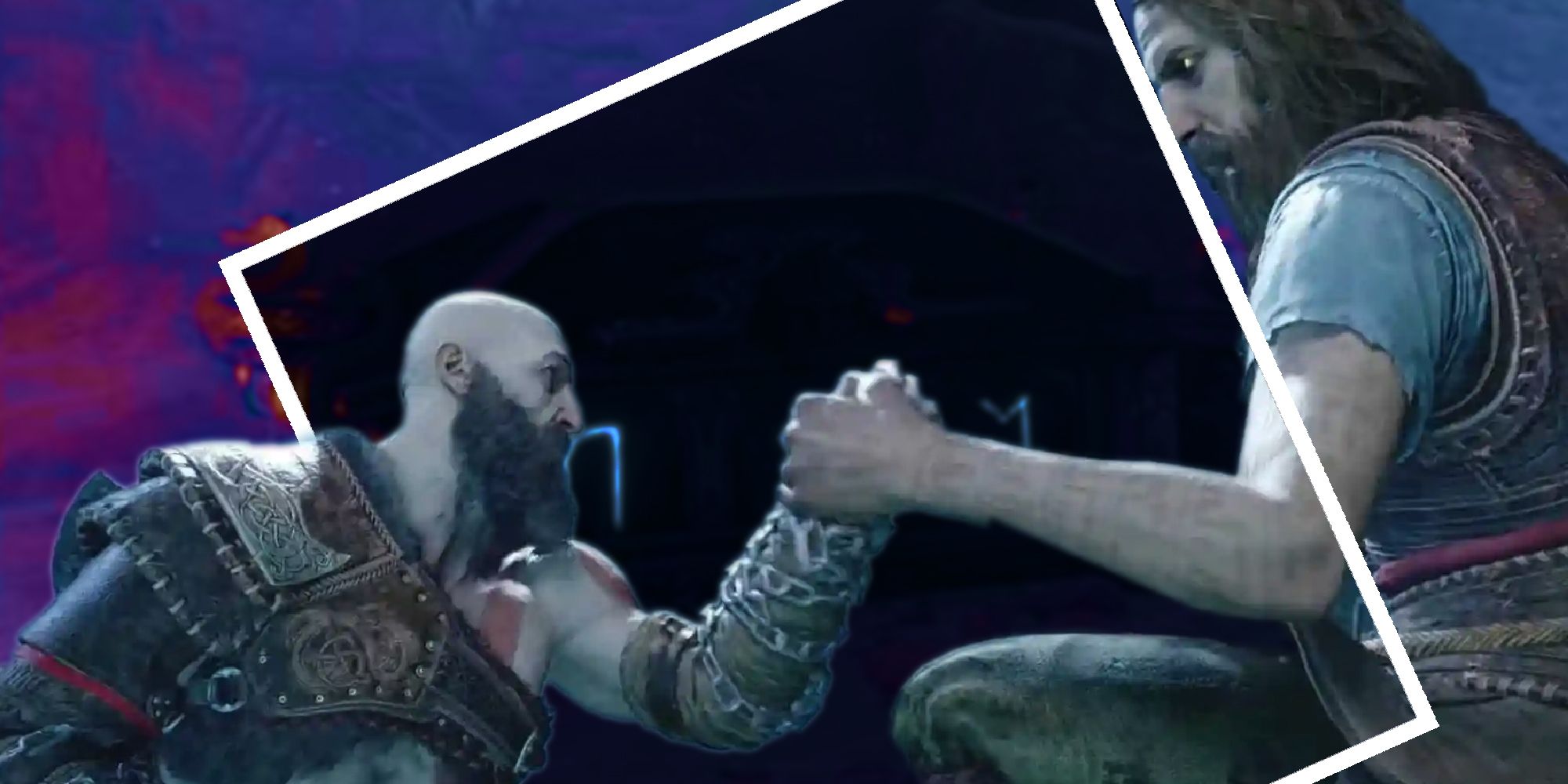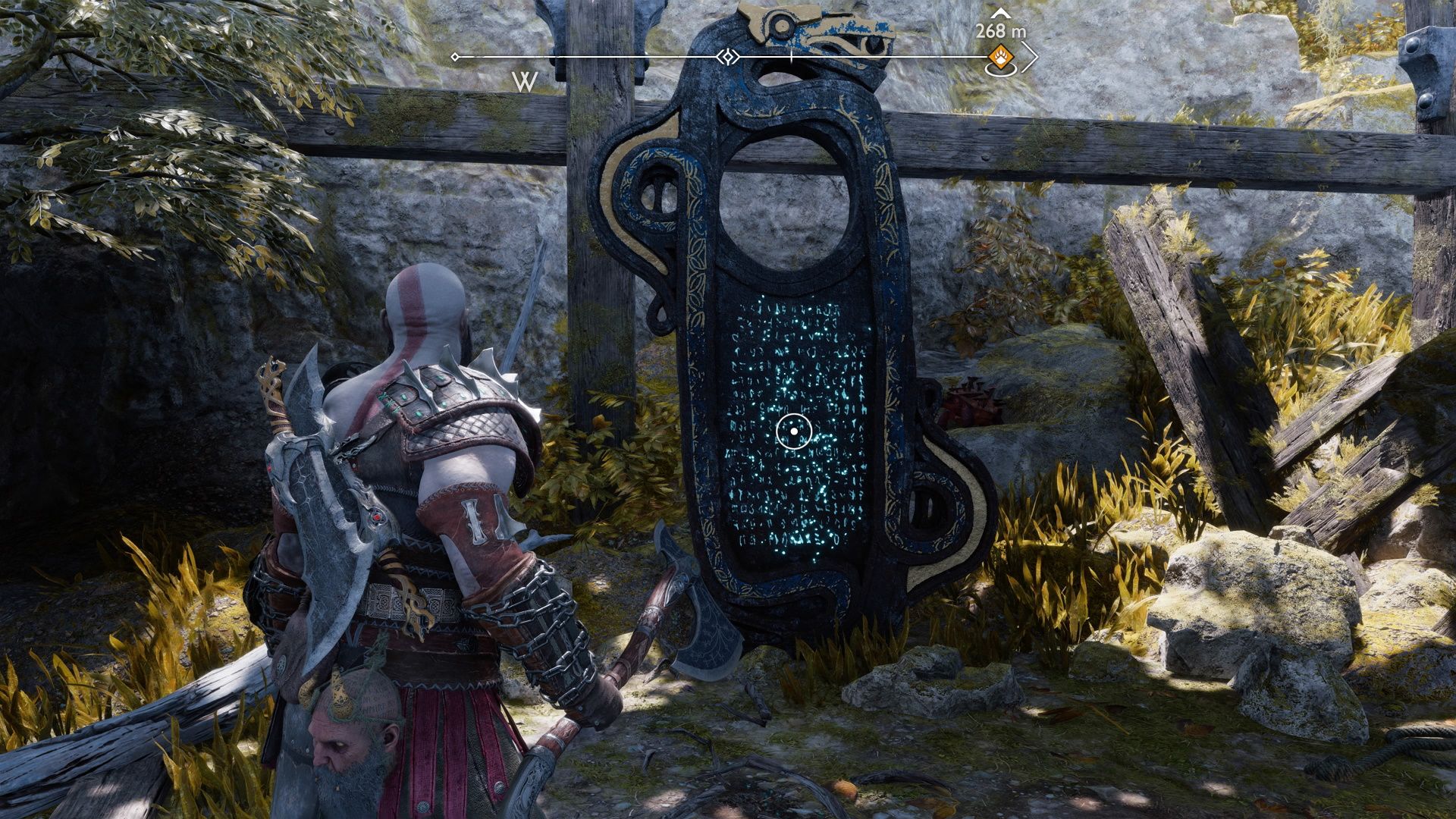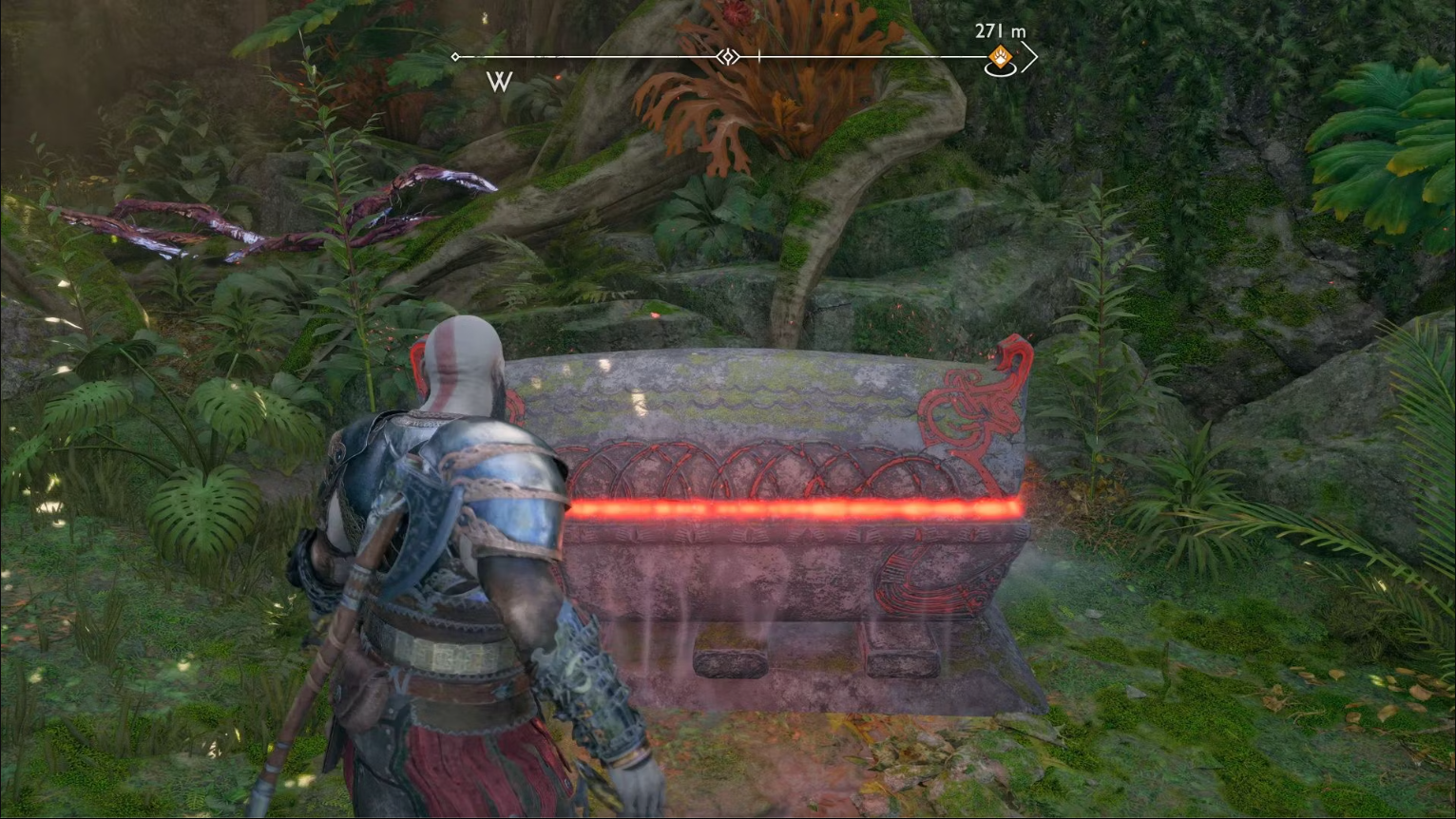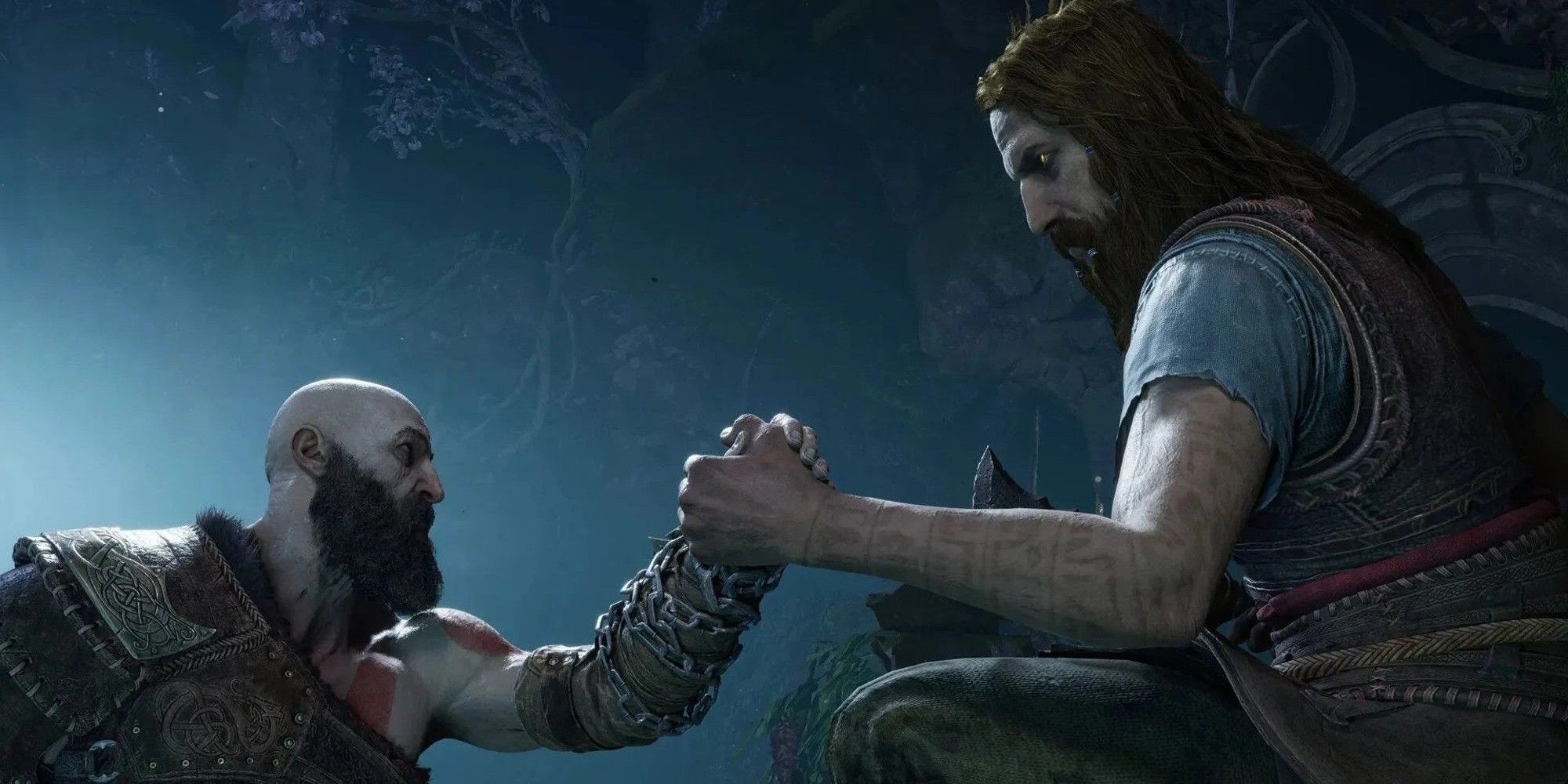If you ask anybody on the internet, they’ll tell you God of War Ragnarok’s biggest problem is that it solves puzzles for you. You’ll survey some gears or a wall for about 90 seconds, then Mirmir or Atreus or Sindri will say ‘why don’t you do [insert puzzle solution]’. It’s annoying, but it’s also par for the course. God of War plays things very, very safe, and the puzzles represent Santa Monica Studios’ biggest fear: that you can’t please all of the people all of the time.
There’s good character writing in God of War Ragnarok, to a much higher quality than we’re used to tolerating in video games. Bouncing between it and Sonic Frontiers especially highlights the usual ‘whoa, let’s be friends and save the world and junk!’ slop we’re used to, and the elevated writing in God of War Ragnarok. The problem is God of War knows its character writing is good, and it’s terrified to compromise that by taking any risks anywhere else.
The puzzles in God of War Ragnarok don’t really exist to be solved. Even without Mirmir telling you the answers, they’re far simpler than we’ve seen in the likes of Tomb Raider and Uncharted. In fact, a decent amount of the time, the game just tells you that you can’t solve a puzzle yet because you haven’t unlocked the necessary equipment. The puzzles aren’t there to challenge you, but to give you something to do until the next bit of character writing comes along.
So much of God of War Ragnarok is busywork. It’s tough to notice at first, because the combat is so fluid and visceral, and puzzles never slow you down. After a while though, you realise a lot of the game is just killing time until we next get a scene with all of the characters sitting around a table talking. I don’t mind a game being built around its cast, especially when the scenes are written as well as they are here, but it feels like the whole game is undermined by the fear that someone, somewhere, might get bored and switch off.
God of War Ragnarok is challenging in the traditional video game sense - turn the difficulty up, and it’s a hard game. Enemies swarm at you, parries must be deliberate and precise, combos must be considered in advance. It’s tough to master, if that’s what you’re looking for. But in every other way, God of War Ragnarok refuses to challenge you. Its themes are weak statements on vengeance that never once get in the way of the terrifically violent might-makes-right gameplay, it rarely leaves you to your own devices but for a puzzle it immediately spoils the solution to, and the narrative relies on quotable lines and big moments while playing it safe at every turn.
This doesn’t make God of War Ragnarok a bad game. Almost all triple-A games play things safe, because they are investments first and art second. In fact, with its excellent character writing and willingness to reinvent characters we know from pop culture, Ragnarok is better and riskier than most. But there’s a sense that, for how good the game is, it might have been even better if it was prepared to lose some people along the way. The more it tries to herd the masses together, the more it sands off its own edges.
The plaudits for God of War Ragnarok have been quite telling. ‘Ragnarok is the best game I’ve played since [the last big triple-A] I’ve played’. When 2023’s first triple-A hamburger is served up, it will be the best game since Ragnarok because these games are built to entertain everyone just enough until the next one comes along. Elden Ring, as I’ve already written about, was not for me at all - but I admire it far more for its willingness to be its own thing. It doesn’t care that I didn’t connect with it and eventually put it down unfinished. Ragnarok, though, will be devastated to learn that its meandering pace and fidget spinner gameplay has me occasionally saving, closing, and opening up Sonic.
The last mainstream triple-A game I can remember taking any sort of risk to be prepared to lose players was The Last of Us Part 2, with its half-way switch to Abby. After opening the game with her killing previous protagonist Joel, and spending 10-15 hours as Ellie hunting her, asking us to empathise with Abby was a challenge, and not everyone was up to the task - but it makes TLOU2 a better game overall, and challenges you to interrogate your own feelings, rather than offering background noise to endlessly violent gameplay. Even with that risk, Naughty Dog is one of the most focus test-reliant studios, so that risk was mitigated by constant building and rebuilding of a game designed first and foremost for player retention.
To get irritated at the puzzles being solved for you in God of War Ragnarok is to miss the point a little. The annoying part is not that Ragnarok tells you what to do next, but how it is afraid to let you think, afraid to let you play. It is constantly throwing crispy, salty fries at you, and occasionally a meaty slider, to make sure you’re always here. Nothing will make you think, nothing will challenge you mentally or narratively. Just exist, let the game exist, and it will all be over soon. It’s Game of the Year material. This is what good games are now.




